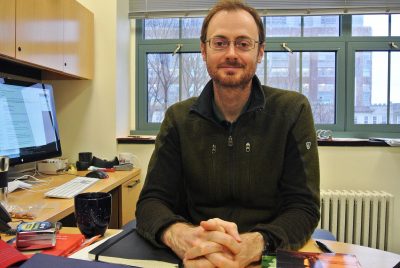
“Are we alone?” The resonating question that most space exploration is based on was brought closer to an answer with the recent discovery of four more planets in TRAPPIST-1, a system of now seven Earth-like planets surrounding a small, ultra-cool dwarf star.
According to NASA’s press release, all seven planets have the potential to have liquid water on its surface, but three of the seven planets are said to be in the “habitable zone” of the star, meaning that they have a higher chance of having liquid water, which is key to life as we know it.
In May 2016, the researchers using the Transiting Planets and Planetesimals Small Telescope announced the first three planets in the system using several ground-based telescopes. This scientific breakthrough was made on Feb. 22 with the help of European astronomers at the University of Liège in Belgium and the Spitzer telescope, a space telescope at NASA.
Philip Muirhead, professor of astronomy at Boston University, detailed the disadvantages of ground telescopes and advantages of space telescopes.
“The problem with telescopes on the ground is that you get interrupted when you’re observing because the sun is coming up,” Muirhead said. “You can’t operate those during the day because the sky is very bright. With the space telescope, you don’t have to deal with the problem of the sun rising — you can just stare at a star for a very long time without any interruption. Because of that fact, they were able to stare at that star for 20 days, and they discovered four additional planets.”
Muirhead, with Julie Skinner, a postdoctoral associate in astronomy at BU, leads a group of undergraduate and graduate students who work in the same vein of planetary discovery called the Muirhead Group. He said the group came close to discovering the new planets in TRAPPIST-1 themselves, having submitted a proposal to study this part of space prior to the discovery being made in Europe.
“After we submitted our proposal, the group in Europe discovered these planets,” Muirhead said. “It’s not to take away from their work at all. They did a lot of work on the system. We are just certainly interested in finding systems orbiting small stars like them.”
The group made their own planetary discovery in 2012 similar to TRAPPIST-1 on a smaller physical scale, Muirhead said. Its discovery still held great weight in determining trends in star and planet locations.
“It’s not seven planets — it’s only three planets, orbiting a small star like this one,” Muirhead said. “None of our planets were habitable, but that discovery and that particular object is called Kepler-42. That was five years ago now, but that discovery showed that stars like these could in fact have multiple small planets orbiting them and orbiting very close to the star.”
Fast-forwarding to the current discovery of the TRAPPIST-1 system, Mark Veyette, a Ph.D student in the Muirhead Group, said that “it was great news” for NASA’s upcoming missions called Transiting Exoplanet Survey Satellite, which is “going to be specifically looking for Earth-like planets around smaller stars than the sun.”
“This system is good evidence that these Earth-like, small, rocky planets are, indeed, very common around these small stars,” Veyette added.
Aurora Kesseli, another Ph.D student in the Muirhead Group, described how its discovery offered hope for the group’s own endeavors.
“I think this discovery also is good news for our group since we are in the middle of a search for systems just like this using the Kepler Space Telescope,” Kesseli wrote in an email to The Daily Free Press. “If this system exists, it seems likely they will find more.”
But there are challenges that will come alongside this more assured space discovery, Skinner said.
“These stars are the most numerous, but they also have a lot of UV and X-ray emission, more so than stars like our sun,” Skinner said. “So we’re going to have to be really careful about how we characterize whether or not life can exist on these planets because we need to assess how much UV light and X-ray light might be depleting the atmospheres of these stars.”
Veyette added that the stars are hard to study in general because of its physical characteristics.
“These small stars offer a lot of benefits for finding small planets, but they’re also intrinsically hard to study in-depth because they’re small and because they’re cooler, they have lower surface temperatures,” Veyette said. “They emit most of their light in the infrared, so we need advanced, new technologies to really study these things in-depth.”
Looking to the future, Muirhead said he is hopeful for the discovery of more systems just as monumental as TRAPPIST-1.
“This discovery gives us a lot of confidence that we’re going to find more systems like this,” Muirhead said. “This is probably not the last object with multiple orbiting planets in the habitable zone. There are many, many more out there.”


















































































































